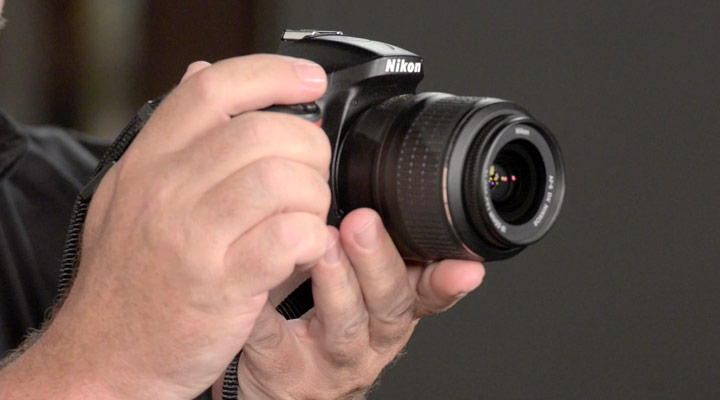Camera Support Tips for Shooting Steady Video
HD-SLR Video Tips: Camera Steadying - Camera steadying tips for HDSLR video shooting (1:37 min.)
Great movies start with great shooting. Moviemaking differs from still photography in this manner, in that with stills, you can pick a fast shutter speed to help you keep the image sharp while shooting; but with movies, shaky shots will be more than detrimental to your story, they will detract from the message you’re trying to get across. Your movies will benefit from these five easy tips for shooting steady video with your Nikon HDSLR (or COOLPIX or Nikon 1 camera for that matter).
-
Basic camera support and handling—holding the camera securely is the best way to ensure your movie footage will be sharp and easy to view. The correct stance for holding the camera while standing is with your feet slightly apart, and your elbows drawn into your body. We like to cradle the camera in the left hand with the right hand on the grip.
-
Using the taut neck strap trick—with the camera’s strap around your neck, hold the camera in front of you, with the strap taut. Doing so keeps you from making jarring movements and helps to stabilize video. While holding the camera this way, you can pivot or even walk while steadily shooting video footage.
-
Lean your body on a nearby structure—when shooting video and you have the ability to lean on a fence, wall or other structure for support, do so. Leaning on such a structure will give you the stability you need to capture great video.
-
Use a tripod—a tripod is one of the best ways to secure your HDSLR while shooting video. Use a good tripod that is designed for use with the weight of the camera that you own, and a fluid head (often sold separately from the tripod) to ensure smooth pans and tilts.
-
Use a monopod—a monopod is another good option for steadying your camera while shooting video. You can stay in one position or spin or move the monopod to introduce movement into your shot. Because the monopod is resting on the ground, the movements will be smooth, which makes for easy viewing.
Remember to check your HDSLR camera's User's Manual for instructions on its particular menu navigation and dial layout.






